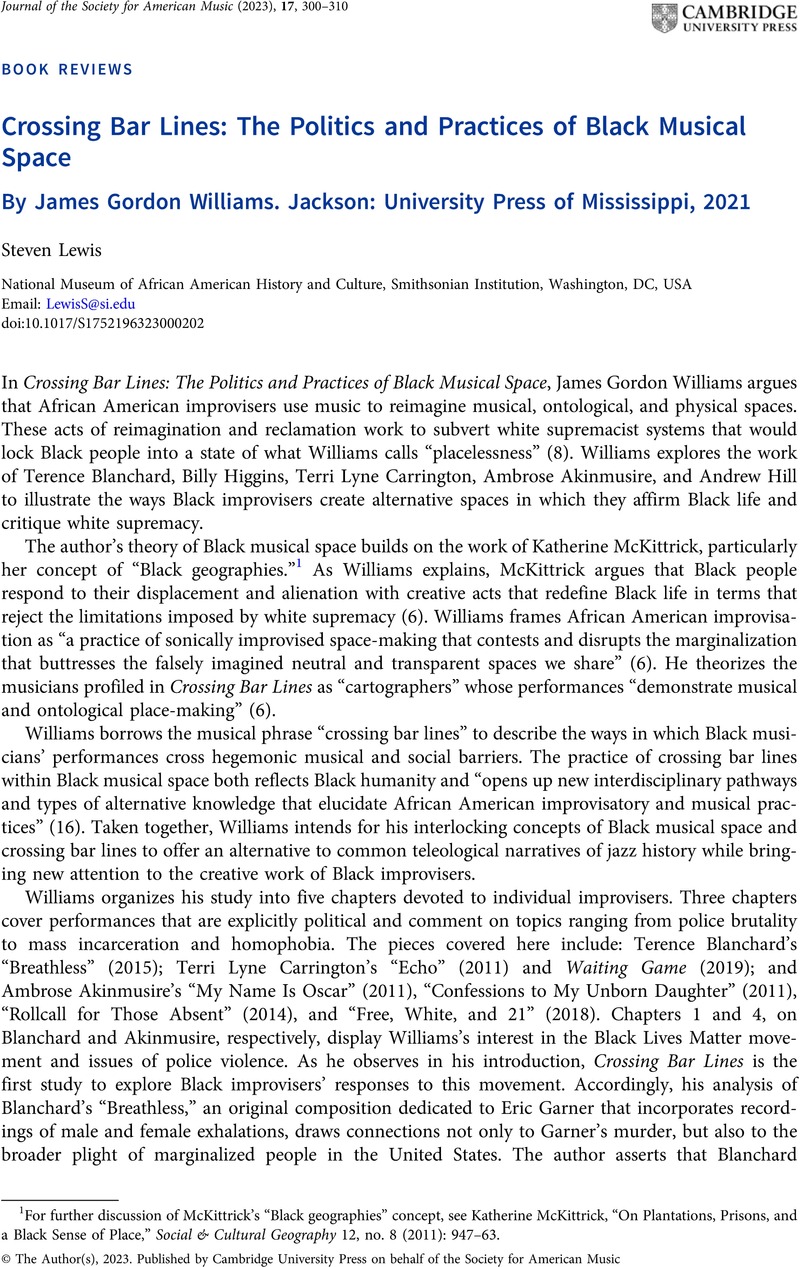No CrossRef data available.
Article contents
Crossing Bar Lines: The Politics and Practices of Black Musical Space By James Gordon Williams. Jackson: University Press of Mississippi, 2021
Review products
Published online by Cambridge University Press: 06 September 2023
Abstract

- Type
- Book Review
- Information
- Copyright
- Copyright © The Author(s), 2023. Published by Cambridge University Press on behalf of the Society for American Music
References
1 For further discussion of McKittrick's “Black geographies” concept, see McKittrick, Katherine, “On Plantations, Prisons, and a Black Sense of Place,” Social & Cultural Geography 12, no. 8 (2011): 947–63CrossRefGoogle Scholar.
2 Jackson, Travis A., “New Bottle, Old Wine: Whither Jazz Studies?,” in Issues in African American Music: Power, Gender, Race, Representation, ed. Maultsby, Portia K. and Burnim, Mellonee V. (New York: Routledge, 2016), 41Google Scholar.
3 Key works include: Floyd, Samuel A. Jr., The Power of Black Music: Interpreting Its History from Africa to the United States (New York: Oxford University Press, 1995)Google Scholar; and Maultsby, Portia K., “Africanisms in African-American Music,” in Africanisms in American Culture, 2nd edn., ed. Holloway, Joseph E., 326–55 (Bloomington, IN: Indiana University Press, 2005)Google Scholar.
4 Moten, Fred, In the Break: The Aesthetics of the Black Radical Tradition (Minneapolis, MN: University of Minnesota Press, 2003)Google Scholar.
5 Wilderson's most extensive discussion of Afropessimist theory appears in Wilderson, Frank, Afropessimism (New York: Liveright Publishing Corporation, 2020)Google Scholar.


